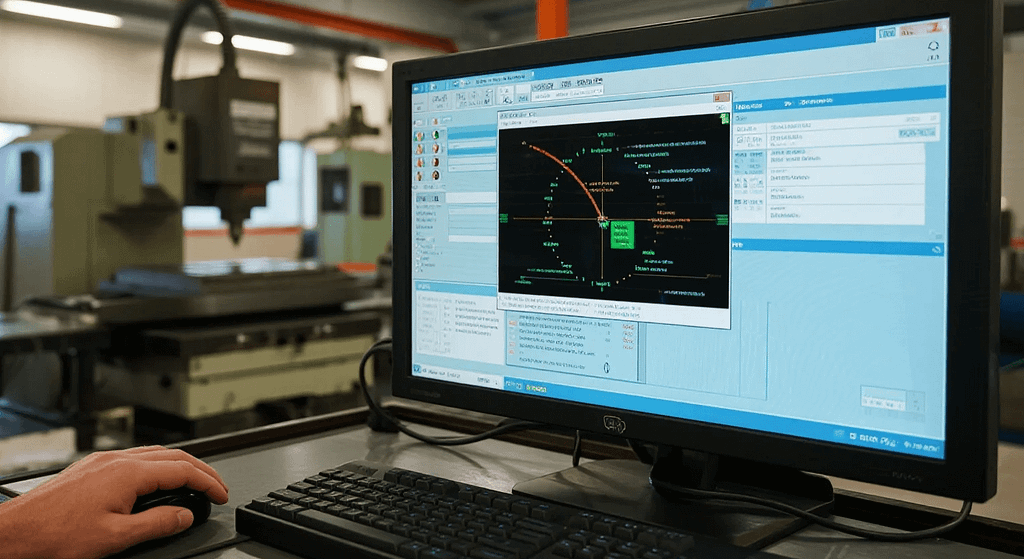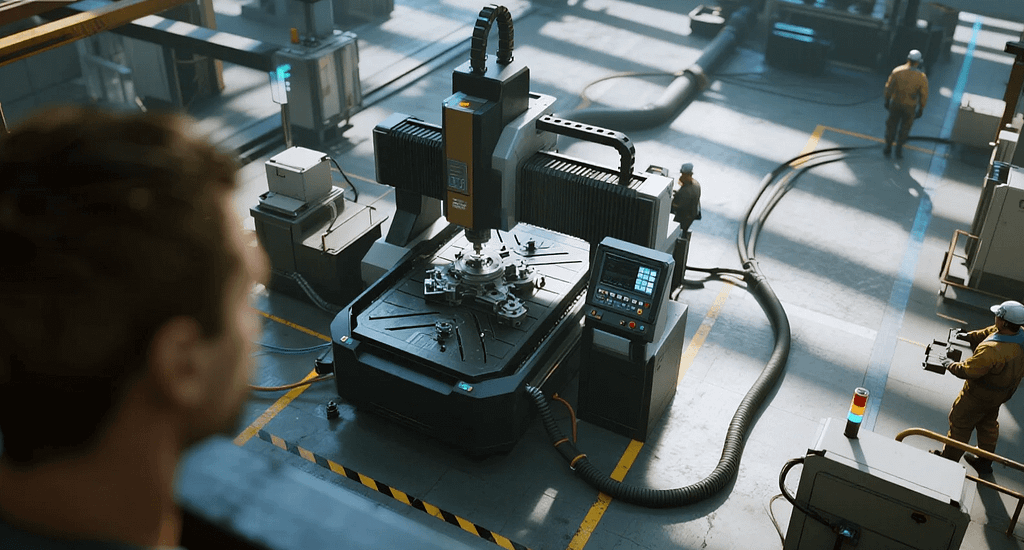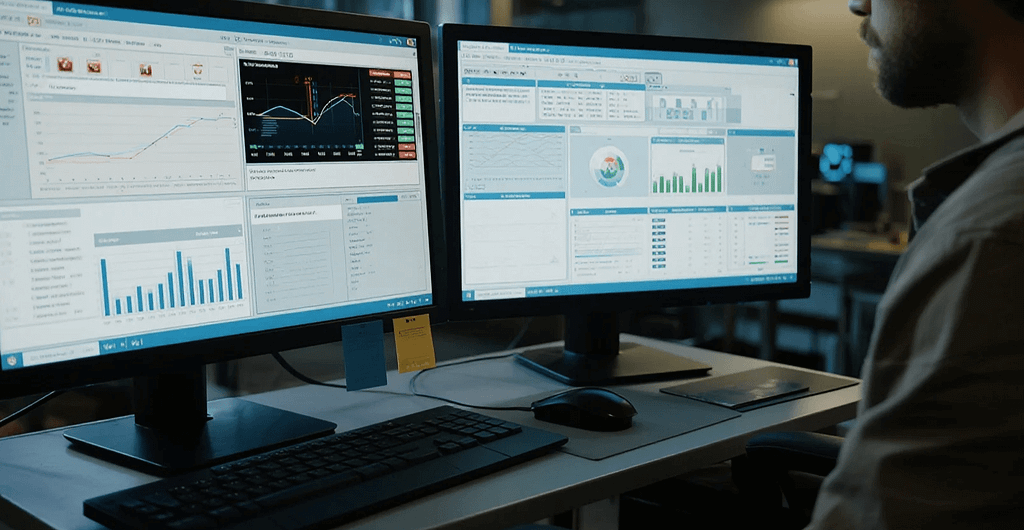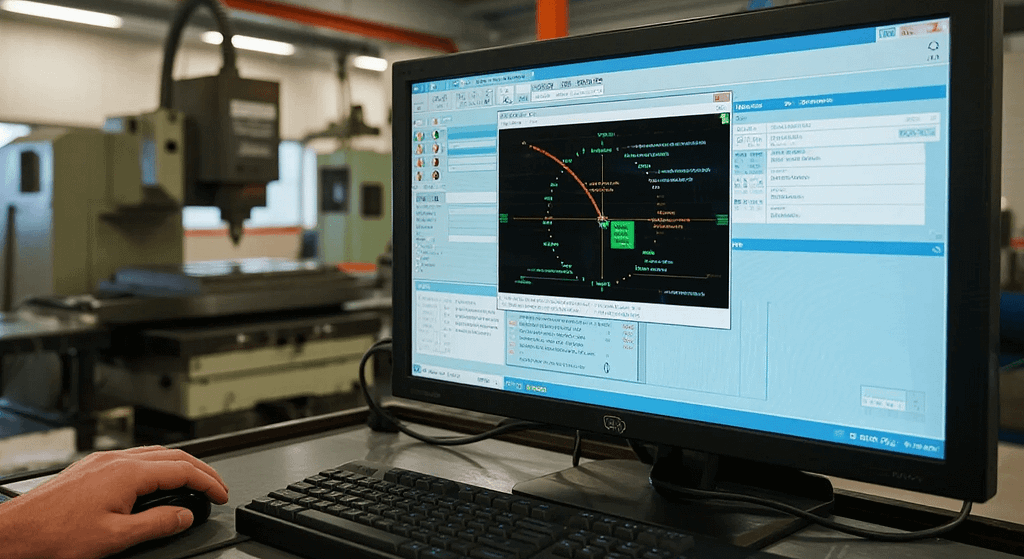Have you ever wondered what makes today’s intricate metal parts, from aerospace components to medical devices, so perfectly precise? The answer lies in CNC programming, the invisible language that directs powerful machines to create with incredible accuracy. For many newcomers to the manufacturing world, the term “CNC programming” can seem intimidating, conjuring images of complex code and endless lines of commands. While it’s a technical skill, it’s far from insurmountable. In fact, understanding the fundamentals of CNC programming is the first step toward appreciating the art and science of modern manufacturing. This article will demystify the process, explain its critical role in production, and provide a clear overview for anyone looking to understand this foundational skill.
The Core of Modern Manufacturing: What Exactly Is CNC Programming?

At its heart, CNC programming, or Computer Numerical Control programming, is the process of creating instructions for a computer-controlled machine tool. Think of it as a detailed recipe for a machine. Instead of ingredients and measurements, the “recipe” uses a specialized code, primarily G-code and M-code, to dictate every movement of the machine’s cutting tools. This code tells the machine what path to follow, how fast to move, how deep to cut, and when to change tools.
The importance of this process cannot be overstated. Before the advent of CNC technology, most machining was done manually, a time-consuming and often imprecise task that relied heavily on the skill of the operator. Human error was a constant risk, and producing identical parts was a major challenge. With CNC programming, manufacturers can achieve a level of precision, repeatability, and efficiency that was previously unimaginable. This is why it has become the backbone of industries where precision is paramount, such as aerospace, automotive, and medical manufacturing.
Ultimately, CNC programming translates a digital design, created in CAD (Computer-Aided Design) software, into a physical object. The programmer uses CAM (Computer-Aided Manufacturing) software to convert the CAD model into the G-code that the CNC machine can understand. This seamless digital-to-physical workflow is what drives the rapid innovation and high-quality output of today’s manufacturing landscape.
Unveiling the Two Faces of CNC Programming: Manual vs. CAM Software

When discussing CNC programming, it’s helpful to understand the two primary methods used to create the code.
Manual Programming: The Foundational Skill
Manual programming involves writing the G-code and M-code instructions line by line, often using nothing more than a text editor. This method requires a deep understanding of the machine’s axes, its capabilities, and the specific codes used for various functions. While it may seem old-fashioned, manual programming is a crucial skill for a CNC professional. It allows for a greater understanding of the machine’s operations and provides the ability to make quick, on-the-fly adjustments at the machine control panel. For simple parts or minor edits to existing programs, manual programming is efficient and powerful. It’s also an excellent way to learn the foundational principles before moving on to more complex methods. However, for intricate geometries or complex parts, manual programming becomes incredibly time-consuming and prone to error.
CAM Software: The Modern Powerhouse
For the vast majority of modern manufacturing tasks, CAM software is the go-to solution. These sophisticated programs automate the process of converting a 3D model into CNC code. A programmer simply imports a CAD file, defines the material, selects the cutting tools, and specifies the machining strategies (e.g., roughing, finishing, drilling). The CAM software then automatically generates the necessary G-code.
The benefits of using CAM software are immense. It drastically reduces programming time, minimizes the risk of human error, and allows for the creation of highly complex and organic shapes that would be virtually impossible to program manually. Features like simulation allow programmers to visualize the entire machining process before a single cut is made, which helps to identify and correct potential collisions or errors. This efficiency and safety make CAM software an essential tool for any company producing complex or high-volume parts.
Navigating the Learning Curve: Why It’s More Attainable Than You Think

So, is CNC programming hard? The short answer is: it’s as challenging as any new technical skill, but it is certainly not beyond reach. The difficulty often lies in the initial learning curve. Newcomers must grasp not only the coding language itself but also the principles of machining, such as toolpaths, speeds and feeds, and material properties.
However, the industry has evolved to make learning more accessible than ever. The increasing user-friendliness of CAM software means that the barrier to entry has lowered significantly. Many software packages feature intuitive interfaces and guided workflows, allowing a user with a good understanding of machining principles to generate code without a deep knowledge of G-code syntax.
Moreover, a wealth of resources is available. Vocational schools, online courses, and even YouTube tutorials offer comprehensive training on both manual programming and CAM software. Companies like Captec Precision, which utilize advanced CNC technologies, rely on skilled programmers who have mastered these tools to deliver high-quality, custom manufacturing solutions. The key to success is a combination of theoretical knowledge and practical, hands-on experience with the machines themselves.
Practical Applications in Manufacturing Services
For a manufacturing services provider, a skilled CNC programming team is the core competitive advantage. It’s the difference between a shop that can only produce simple parts and one that can handle the most complex and demanding projects.
A company with strong programming capabilities can offer a wider range of services, including:
- Prototyping: Rapidly generating complex parts for new product development.
- High-Volume Production: Ensuring consistency and efficiency across thousands of identical parts.
- Customization: Machining unique, one-off components with perfect accuracy.
- Multi-Axis Machining: Creating highly complex geometries using 4-axis or 5-axis machines, which require sophisticated programming to coordinate multiple movements simultaneously.
The ability to write a clean, efficient, and precise program directly impacts the final product’s quality, cost, and delivery time. Ultimately, for customers seeking a reliable manufacturing partner, understanding a company’s expertise in CNC programming is a good indicator of their overall capability and commitment to precision.
FAQs About CNC Programming
Q: What is the difference between CNC programming and operating a CNC machine?
A: A CNC programmer creates the instructions (the G-code) that tell the machine what to do. A CNC operator is responsible for setting up the machine, loading the material, running the program, and inspecting the finished parts. While there is often overlap, they are distinct roles.
Q: Do I need a college degree to learn CNC programming?
A: No, a degree is not typically required. Many successful programmers have learned through vocational training, apprenticeships, and on-the-job experience. Practical skills and a solid understanding of machining principles are more valuable than a formal degree.
Q: Is G-code the only language used in CNC programming?
A: G-code is the most common language, but there are other codes, such as M-code (for miscellaneous functions like turning on coolant or changing tools) and more advanced languages used in specific control systems. However, G-code remains the universal foundation.
